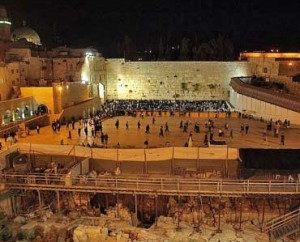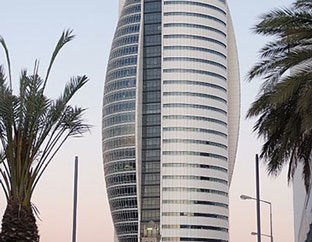Haifa Holy Sites
Haifa Holy Sites: Eliyahu’s Cave
Haifa’s fascinating history and the Biblical events that took place on Mount Carmel (Har HaCarmel) with Eliyahu Hanavi (Elijah the Prophet) have left their mark on the city.

Eliyahu’s Cave (Photo: Ori®)
Eliyahu’s Cave is a Jewish holy site located on Allenby Street in the Lower Town area, not far from the beach. Tradition claims that this was the cave where Eliyahu hid for three years from the wicked King Ahab and his wife, Izevel (Jezebel). It may have been to this cave that wild ravens brought Eliyahu food. People come from all over the world to pray here and many stories are told of prayers for healing that were answered, some miraculously. This is a holy site so please dress modestly. For additional information call (04) 852-7430.
The Horn of the Carmel, the Muhrakha, meaning scorching or burning in Arabic, is believed to be the site where Eliyahu Hanavi challenged the priests of the false god Ba’al to offer sacrifices to see if their false god would accept them, while Eliyahu would build an altar and offer a sacrifice to G-d. Eliyahu drenched his altar with water, and even so, fire came down from heaven and consumed his offering and even burned the rocks around it, whereas the offerings of the pagans were not answered. This miracle caused the Jews to return to G-d. They fell down in worship and said “HaShem hu haElokim, HaShem hu haElokim,” meaning “G-d is the only G-d” (I Kings 18:22-39). This area has many black rocks that appear burned. It is located above the Kishon River and faces the Jezreel Valley, also called Meggido, or the Valley of Armageddon. This is also the site of a Carmelite Monastery, built originally in the 1st century CE and located behind the Druze village Daliyat HaCarmel. From Daliyat HaCarmel it is possible to get a special taxi that goes to the Muhrakha site.
Burial Site of Great Rabbis
The old Haifa Jewish Cemetery is located at 120 Jaffa Road, near the police station, and contains the kever, or burial site, of Rabbi Abdimi Daman of Haifa, one of the greatest of the early Jewish sages. A marble matzeiva, or tombstone, is believed to mark the site of the kever of Nachmanides, Rabbi Moshe ben Nachman, the Ramban, who was buried near the grave of Rabbi Yechiel of Paris. Rabbi Yechiel was persecuted during the Crusades for defending the Talmud in a public debate and so he made aliya to the land of Israel. The Ramban was born in Gerona, Spain, in 1195 and was a brilliant Talmudist, but worked as a physician for his livelihood. He eventually became the rabbi of the entire province of Catalonia. He was summoned to a public debate where he defended the Jewish faith eloquently, won the debate, and was rewarded by the king. However, as a result of this he was taken to court by the Dominicans and at the age of 72 found himself banished from Spain. The Ramban made aliya to Jerusalem, but found the city – and the entire land of Israel – in a state of devastation. He founded the Ramban Synagogue in Jerusalem in 1267 that is still in existence in the Jewish Quarter of the Old City.
Haifa Holy Sites: Did You Know?
Haifa has more than 200 synagogues. Haifa’s Central Synagogue is a magnificent building located on Harav Herzog Street. At the entrance are pillars and arches, and carved in stone are the Ten Commandments surrounded by two lions. The Holy Ark, the aron kodesh, is very beautiful. There are also drawings of Eliyahu Hanavi, a seven-branched menorah, and the 12 tribes of Israel.








